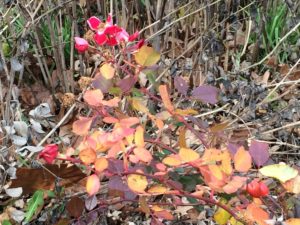
Rosa Oso Easy ‘Cherry Pie’ in flower and with hips in mid-December
Thomas Moore, in his poem “The Last Rose of Summer”, said:
Tis the last rose of summer,
Left blooming alone;
All her lovely companions
Are faded and gone.
He may have been an excellent poet but I doubt that he was a gardener. Even if he was, he lived in the fifteenth and sixteenth centuries, long before many of the plants we use in our gardens now had been brought to England.
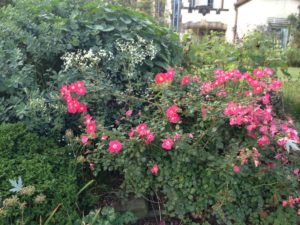
Rosa Oso Easy ‘Cherry Pie’

Rosa ‘Mortimer Sackler’
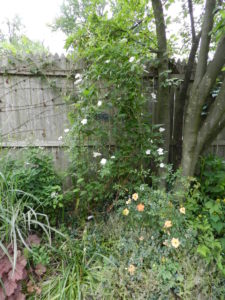
Rosa x ‘Nastarana’ and Oso Easy ‘Paprika’ with Heuchera ‘Georgia Peach’ and Miscanthus sinensis ‘Variegatus’
Many roses continue to bloom into the fall, much less the end of summer. In fact, two of my Oso Easy roses, ‘Cherry Pie’, and ‘Happy Smoothie’ are still flowering. I also had two climbers, ‘Mortimer Sackler’, a pink David Austin, and ‘Nastarana’, a white cultivar from a southern nursery, in bloom until a few weeks ago.
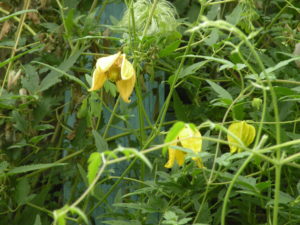
Clematis tangutica ‘Bill MacKenzie’
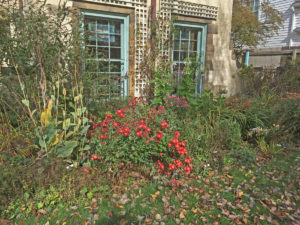
Late blooming mums
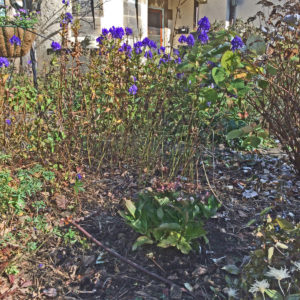
Aconitum carmichaelii
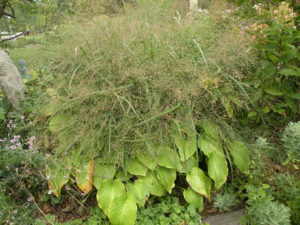
Panicum ‘Rotstralhbusch’ in bloom
It is starting to feel a lot like late autumn now as the temperatures drop but my garden still pleases me with its abundance of late blooming clematis, chrysanthemums, asters, Aconitum (Monkshood), ornamental grasses, an occasional unexpected Rudbeckia maxima (Giant Coneflower) and reblooming Nepeta (Catmint) and snapdragons.
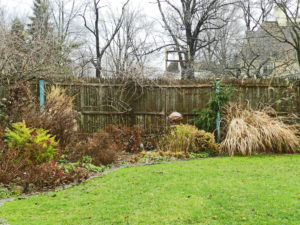
Foliage color and texture during early winter with Juniperus ‘Eternal Gold’, copper urn, Picea abies ‘Acrocona’, Miscanthus
Even when all of those “companions” are faded and gone, the conifers of various colors will remain as will the grasses and perennials that I don’t cut back until spring, leaving their seedheads for the birds and their forms that remind me that the garden is merely dormant, not dead. Thus, I always look forward to the renewal of spring.


0 Comments